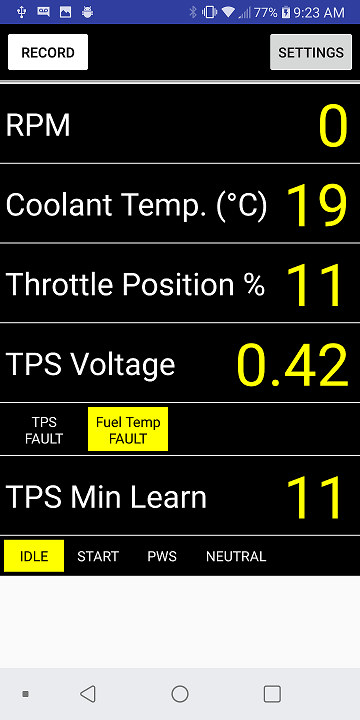The Z32 has a redundant idle detection system that utilizes both a soft-switch and hard-switch as described in the factory service manual on page EF&EC-15. The ECU relies primarily on the soft-switch and falls back to using the hard-switch only when it detects a fault in TPS operation.
The soft-switch is calculated in software by the ECU and determines idle condition based on changes in TPS voltage. It has a self-learn function that remembers the lowest TPS voltage and compares the current TPS voltage to this every 10 milliseconds. If the difference between the current TPS voltage and self-learn voltage is less than a (small) threshold value, the idle condition is turned ON. Conversely, when the voltage difference goes above this threshold, the idle condition is turned OFF. If the TPS voltage goes lower than the self-learn voltage, the ECU re-adjusts the idle self-learn voltage to this new low value. The ECU falls back to using the idle hard-switch only when the TPS sensor voltage goes out of range. The allowable range for TPS operation is between 0.04v and 4.82v. If the TPS voltage goes below or above this range, a TPS error state is triggered. If this error occurs repeatedly over time with the vehicle at speed greater than 4km/h, an ECU fault code 43 will eventually be triggered.
ConsultSpy can be used to monitor TPS idle operation using the Throttle Position, TPS Voltage, TPS Min Learn, and Error State #1 data monitors.

Idle hard-switch fall-back operation:
Soft-switch self learn readjusting to a lower TPS position as the minimum TPS voltage drops